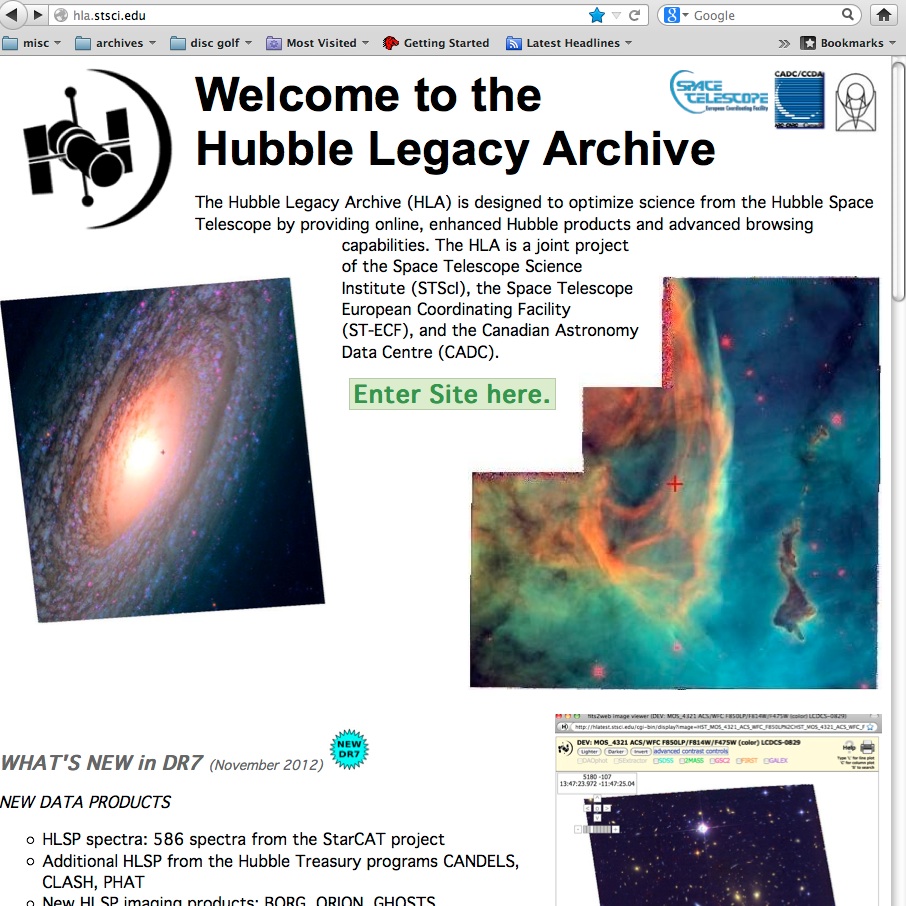 Step 1 -
Enter the Hubble Legacy Archive (HLA - type hla.stsci.edu in your browser window). Click Enter Site here. NOTE: If you have not previously used the HLA you may want to check out "Getting started" in the Help Center.
Step 1 -
Enter the Hubble Legacy Archive (HLA - type hla.stsci.edu in your browser window). Click Enter Site here. NOTE: If you have not previously used the HLA you may want to check out "Getting started" in the Help Center.
 Step 1 -
Enter the Hubble Legacy Archive (HLA - type hla.stsci.edu in your browser window). Click Enter Site here. NOTE: If you have not previously used the HLA you may want to check out "Getting started" in the Help Center.
Step 1 -
Enter the Hubble Legacy Archive (HLA - type hla.stsci.edu in your browser window). Click Enter Site here. NOTE: If you have not previously used the HLA you may want to check out "Getting started" in the Help Center.
 Step 2 -
Click advanced search. Enter 10265 in the Proposal ID: box and click. This puts you in the Inventory view.
Step 2 -
Click advanced search. Enter 10265 in the Proposal ID: box and click. This puts you in the Inventory view.
Step 3 -
Note there are High Level Science Products (Level 5) with 84 F606W and 124 F814W images combined. The HLA source lists used by the HSC are for single visits, with 4 exposures in this particular case. Hence the limiting magnitude is much brighter for the HSC in this field than the data would allow. See FAQ # 11 for a discussion of HSC limitations.
We will be working with visit 10265_01.

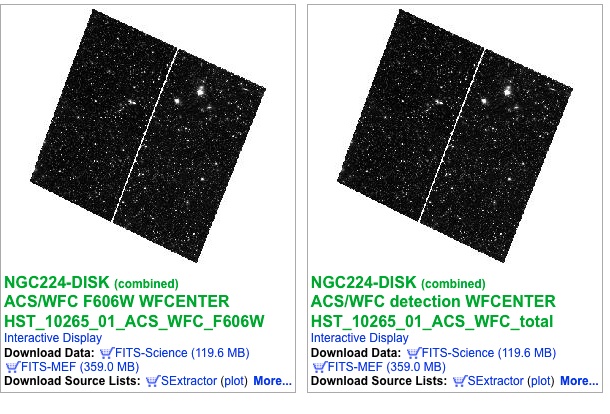 Step 4 -
Click the Images button. Find the HST_10265_01_ACS_WFC_F606W image (the 7th image) and click on Interactive Display.
Step 4 -
Click the Images button. Find the HST_10265_01_ACS_WFC_F606W image (the 7th image) and click on Interactive Display.
 Step 5 -
Click the advanced HSC controls, and then the Require NumImages > 1 box to remove objects with only one detection (generally cosmic rays that have slipped in).
Click on the pink HSC (beta) box to see the HSC sources. Pan out and check the uniformity. In this set of images the uniformity is good, but often it is not (see "FIVE THINGS YOU SHOULD KNOW ABOUT THE HSC").
Step 5 -
Click the advanced HSC controls, and then the Require NumImages > 1 box to remove objects with only one detection (generally cosmic rays that have slipped in).
Click on the pink HSC (beta) box to see the HSC sources. Pan out and check the uniformity. In this set of images the uniformity is good, but often it is not (see "FIVE THINGS YOU SHOULD KNOW ABOUT THE HSC").
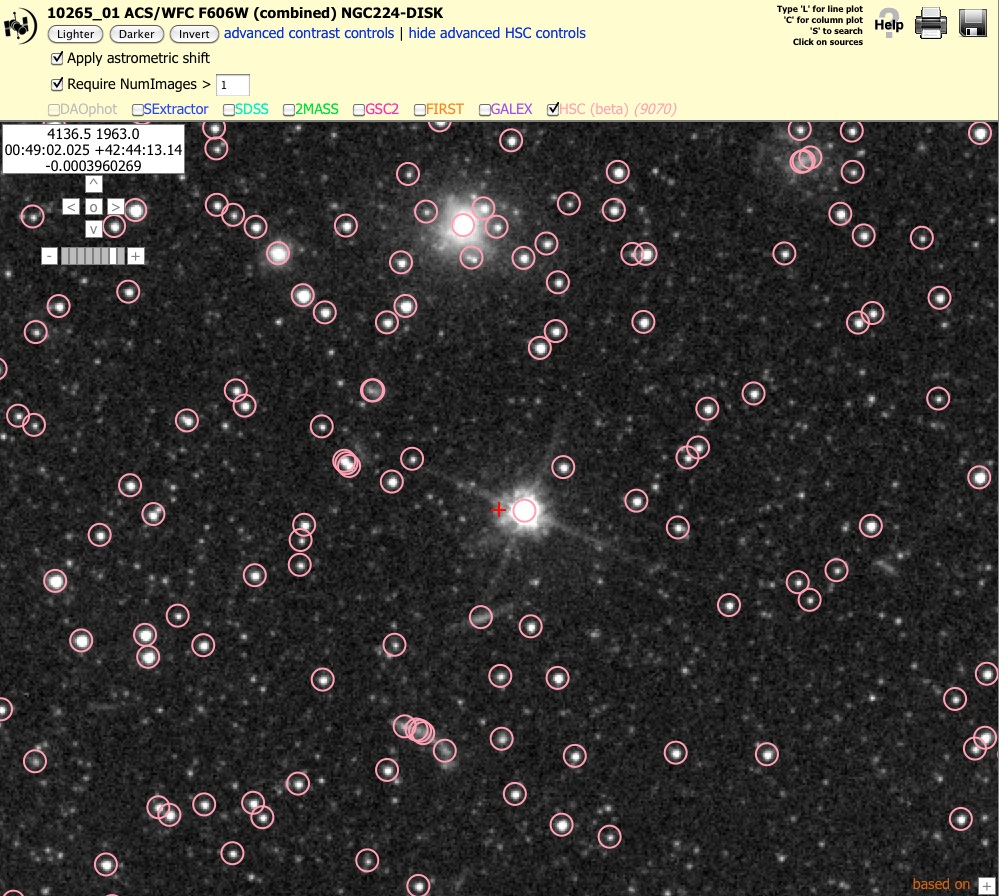
 Step 6 -
Zoom-in on the field shown on the right (middle right part of the image; at X = 4320, Y = 2055) and pick the bright star near the middle of the image. Click to see the HSC information.
Step 6 -
Zoom-in on the field shown on the right (middle right part of the image; at X = 4320, Y = 2055) and pick the bright star near the middle of the image. Click to see the HSC information.
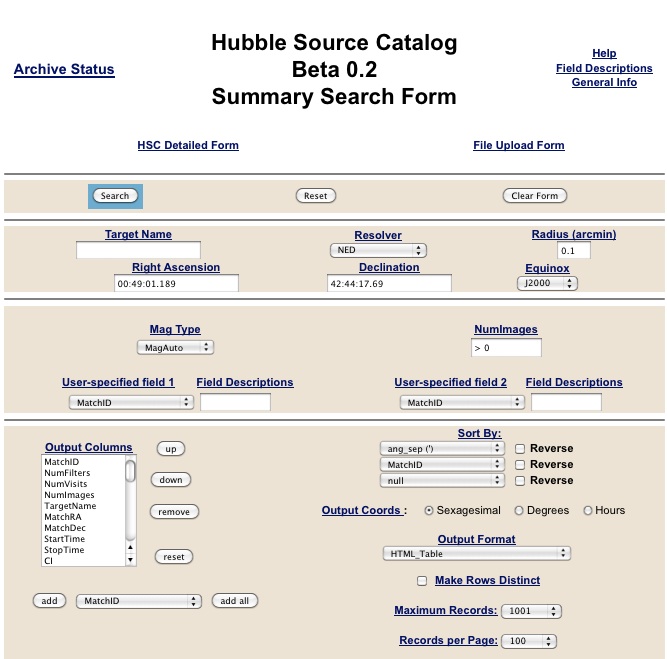 Step 7 -
The HSC includes data from 28 images for this star. Scroll over to see the HSC information. For example, for MatchID = 6388268 the mean magnitude in A_F814W is 19.590, the scatter in all the measurements is sigma = 0.027 mag, and the concentration index is CI = 1.338 (Note: This is large for a star - probably because the star is saturated).
Step 7 -
The HSC includes data from 28 images for this star. Scroll over to see the HSC information. For example, for MatchID = 6388268 the mean magnitude in A_F814W is 19.590, the scatter in all the measurements is sigma = 0.027 mag, and the concentration index is CI = 1.338 (Note: This is large for a star - probably because the star is saturated).
Step 8 -
Go to the HSC Home page. Click on Search with Summary Form now. Enter the coordinates from above in the Right Ascension and Declination boxes and click Search. The first object should have MatchID = 6388268, with the same information as shown in step 6.
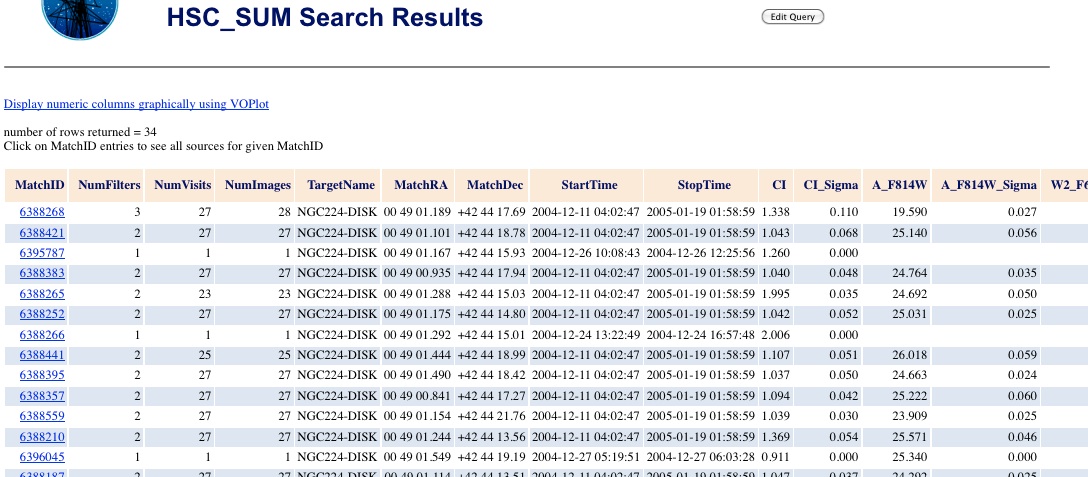 Step 9 -
Click on 6388268 to go to the detailed form to see all 28 separate detections (11 in F606W, 16 in F814W, and 1 in F435W) that have been summarized in the summary form.
Note that some of the objects have NumImages = 1, since we did not change the default from NumImages > 0 before making the search. These are likely to be cosmic rays.
Step 9 -
Click on 6388268 to go to the detailed form to see all 28 separate detections (11 in F606W, 16 in F814W, and 1 in F435W) that have been summarized in the summary form.
Note that some of the objects have NumImages = 1, since we did not change the default from NumImages > 0 before making the search. These are likely to be cosmic rays.
Step 10 -
Go back to the HSC Summary Search Form to make a catalog to download. Change:
radius to 2.0 (arcmin)
Mag Type to MagAper2
Output Coordinates to Degrees
Output Format to IRAF space-separated w/INDEF
Maximum Records to 10001.
Click Search:
A catalog with N = 3338 entries will be
sent to your computer to read (e.g.
with textedit) and save (e.g., using
"save as").

 Other Help files you may want to review:
Other Help files you may want to review:
1. A Basic Hubble Source Catalog (HSC) Walkthrough (this document).
 2. Advanced search techniques (e.g., customizing search and output options, using a list of targets, …). future
2. Advanced search techniques (e.g., customizing search and output options, using a list of targets, …). future
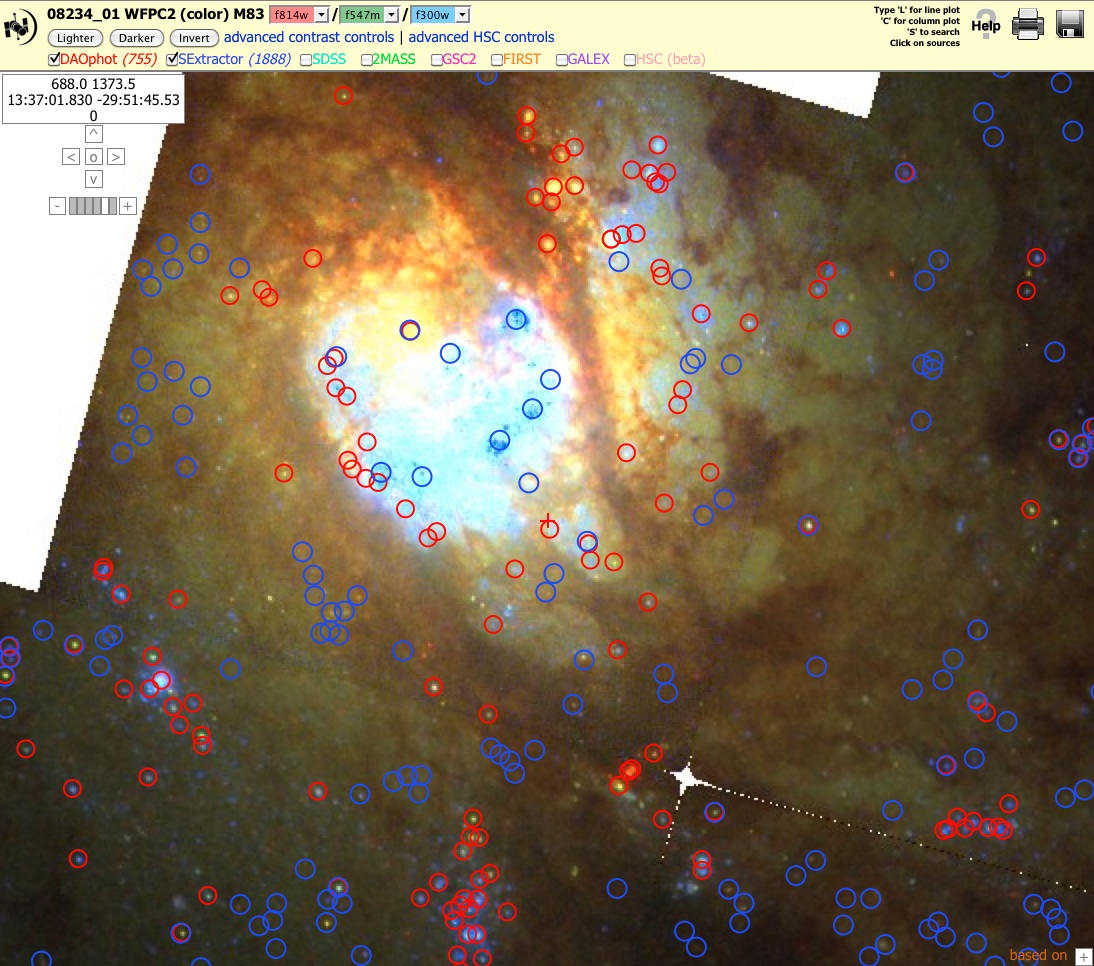 3. Common artifacts and how to minimize their impact. future
3. Common artifacts and how to minimize their impact. future
Detailed "Use Cases" and Youtube training videos will be available for Version 1 of the HSC.